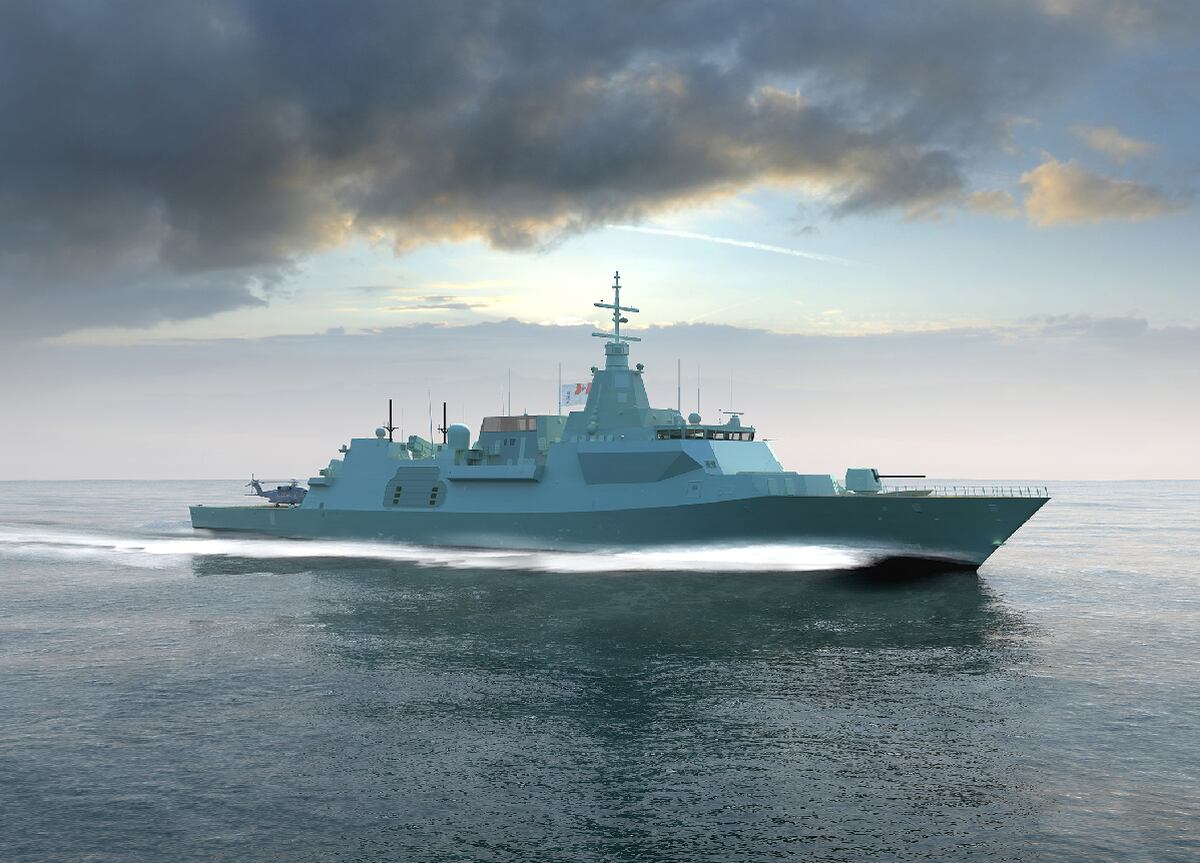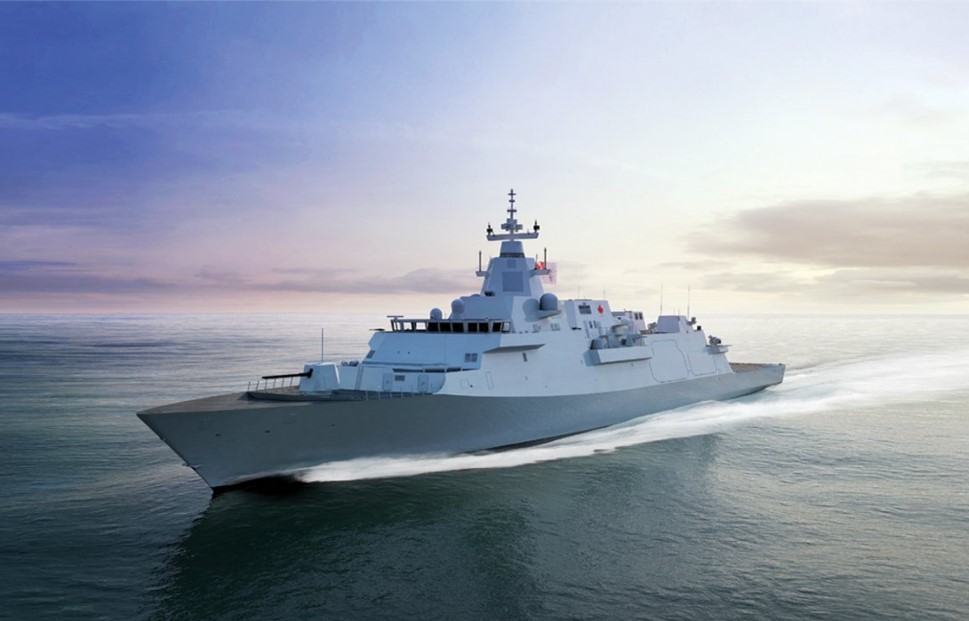Naval Group, Fincantieri join forces in Canada warship tender
By: Pierre Tran and Tom Kington
01.12.2017

Canada has declared its intention to acquire 15 surface combatant ships. Naval Group and Fincantieri proposed a joint offer based on the FREMM. (Naval Group)
PARIS and ROME — Naval Group and Italian partner Fincantieri have filed a joint bid based on the FREMM multimission frigate in the Canadian tender for 15 warships, a spokesman for the French shipbuilder said Friday.
“We submitted our offer yesterday,” the Naval Group spokesman told Defense News.
The joint offer has “strong support” of the French and Italian governments, the two companies said in a Dec. 1 joint statement.
That bid benefits from the FREMM frigate being sea-proven, interoperable by NATO standards and available off the shelf, all of which cuts stress on the Canadian budget, the spokesman said.
Announcement of that offer marks a turnaround for Fincantieri, which previously objected to the way the tender was set up. The Italian company was unhappy with the Canadian request that a large amount of technical data about the frigate be handed over to the prime contractor, Irving Shipbuilding, before a winner is chosen.
The statement on their joint bid, however, contains a carefully worded paragraph stating that “transfer of technology” would go ahead “should the offer be accepted.”
The declaration of interest hinged on technology transfer in the event of victory, a Fincantieri spokesman said.
“It was unusual that the transfer of a large amount of technical data to a private company was requested at the start of the procurement procedure, before winning,” he said.
“Should the offer be accepted, the future frigates would be built in Canada at Irving Shipbuilding in a very short time, maximizing Canadian industrial participation and job creation locally through a dedicated and comprehensive transfer of technology, as well as integrating Canadian suppliers into the two companies’ global supply chains,” the two companies said in the statement.
The international competition for the Canadian Surface Combatant has sparked close interest and is seen as a test of European industrial consolidation. France and Italy are in negotiations for closer ties between Fincantieri and Naval Group, in an attempt to increase cross-border cooperation.
The two companies and government officials are in talks for a cross-shareholding of 10 percent in the partner firms and creation of a joint venture to pursue export contracts for warships. A deal is expected to be reached next year.
Naval Group and Fincantieri jointly designed and developed the FREMM frigate, which sails with the French and Italian navies. Prior to the FREMM, the two firms worked together on the Horizon, an air-defense frigate with a higher level of common equipment than the former.
https://www.defensenews.com/naval/2017/12/01/naval-group-fincantieri-join-forces-in-canada-warship-tender/?utm_source=Sailthru&utm_medium=email&utm_campaign=DFN DNR 12.01.17&utm_term=Editorial - Daily News Roundup
By: Pierre Tran and Tom Kington
01.12.2017
Canada has declared its intention to acquire 15 surface combatant ships. Naval Group and Fincantieri proposed a joint offer based on the FREMM. (Naval Group)
PARIS and ROME — Naval Group and Italian partner Fincantieri have filed a joint bid based on the FREMM multimission frigate in the Canadian tender for 15 warships, a spokesman for the French shipbuilder said Friday.
“We submitted our offer yesterday,” the Naval Group spokesman told Defense News.
The joint offer has “strong support” of the French and Italian governments, the two companies said in a Dec. 1 joint statement.
That bid benefits from the FREMM frigate being sea-proven, interoperable by NATO standards and available off the shelf, all of which cuts stress on the Canadian budget, the spokesman said.
Announcement of that offer marks a turnaround for Fincantieri, which previously objected to the way the tender was set up. The Italian company was unhappy with the Canadian request that a large amount of technical data about the frigate be handed over to the prime contractor, Irving Shipbuilding, before a winner is chosen.
The statement on their joint bid, however, contains a carefully worded paragraph stating that “transfer of technology” would go ahead “should the offer be accepted.”
The declaration of interest hinged on technology transfer in the event of victory, a Fincantieri spokesman said.
“It was unusual that the transfer of a large amount of technical data to a private company was requested at the start of the procurement procedure, before winning,” he said.
“Should the offer be accepted, the future frigates would be built in Canada at Irving Shipbuilding in a very short time, maximizing Canadian industrial participation and job creation locally through a dedicated and comprehensive transfer of technology, as well as integrating Canadian suppliers into the two companies’ global supply chains,” the two companies said in the statement.
The international competition for the Canadian Surface Combatant has sparked close interest and is seen as a test of European industrial consolidation. France and Italy are in negotiations for closer ties between Fincantieri and Naval Group, in an attempt to increase cross-border cooperation.
The two companies and government officials are in talks for a cross-shareholding of 10 percent in the partner firms and creation of a joint venture to pursue export contracts for warships. A deal is expected to be reached next year.
Naval Group and Fincantieri jointly designed and developed the FREMM frigate, which sails with the French and Italian navies. Prior to the FREMM, the two firms worked together on the Horizon, an air-defense frigate with a higher level of common equipment than the former.
https://www.defensenews.com/naval/2017/12/01/naval-group-fincantieri-join-forces-in-canada-warship-tender/?utm_source=Sailthru&utm_medium=email&utm_campaign=DFN DNR 12.01.17&utm_term=Editorial - Daily News Roundup



